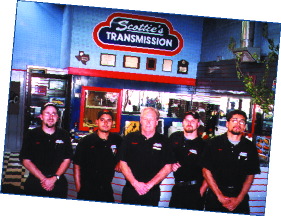
Scottie's Transmissions
Amarillo, Texas
by Paul Morton

Scottie's Transmissions
Amarillo, Texas
by Paul Morton
 For many independent transmission shops, the growing numbers of transmission types that have appeared over the past several years have presented a significant challenge to their business. The technical demands associated with diagnosing and rebuilding the ever-evolving units often stretch resources to their limits. Many shop owners have recognized this and have set practical limits on what they will and will not work on.
For many independent transmission shops, the growing numbers of transmission types that have appeared over the past several years have presented a significant challenge to their business. The technical demands associated with diagnosing and rebuilding the ever-evolving units often stretch resources to their limits. Many shop owners have recognized this and have set practical limits on what they will and will not work on.
Scottie South, owner of Scottie's Transmission in Amarillo, Texas, is one shop owner whose business experienced considerable growth, only for him to realize it was not what he wanted after all. In downsizing, he reduced the number of transmission types his shop would work on, selecting only a dozen or so of those models most commonly found in his market area. How that has worked for him and his shop will be examined a little later in the article.
Scottie South was born in Lubbock, Texas, but moved to Southern California when very young. His father was a mechanic in whom young Scottie held a great deal of respect and admiration. "He would work on engines all day long, then come home at night and sit down at a sewing machine and sew headliners or upholstery," he recalled. Scottie said his father was one who believed that if someone else could do something, he could do it better. His auto repair shop not only did mechanical work, but anything and everything the customer needed; body work, paint, or fabric repair, top to bottom, bumper to bumper.
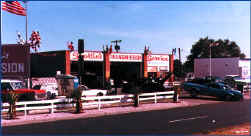
1974 to 1984
Scottie said he could recall the exact time in his life that he knew he was destined to work on automatic transmissions. He was nine years old, sitting in his father's car, stopped at a traffic light. In the next lane was a man driving a brand new '49 Oldsmobile Rocket 88. At the light change, the man accelerated away with both hands on the steering wheel, while his new "automatic" transmission shifted for him. Scottie said when he asked his dad when they would get a chance to work on such a transmission, he was told that automatic transmissions were
"just a passing fad." According to Scottie, it was the only thing his father was ever wrong about.
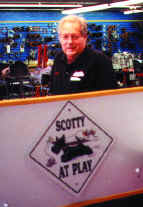
Scottie South |
 Barbara South |
Scottie's father died when he was 11, after an illness that depleted the family's assets. Before long it was necessary for Scottie to help contribute to the family's support, and he did so with a series of odd jobs; none of which he wanted to make into a career. He was still fascinated with automatic transmissions, but no one would hire him to work on one without experience or training. And, as the dilemma often works, he couldn't get the experience and training without the right job.
At the age of 21, Scottie managed to enter a trade school that gave him the start he was searching for. He had just married, and was looking for a place to settle. He and wife Barbara traveled throughout the Northwest, California, and Nevada, looking for the right spot. In 1969 they moved to Amarillo, Texas, and Scottie went to work for a transmission shop that was part of a national chain.
The year 1972 was a watershed for Scottie. A spiritual awakening gave him reason to reassess his life, and he felt some changes were in order. He stopped drinking, and began to focus more on his family, which now included daughter Karrie, and son Stacy. Just in time, as it turned out, because his youngest daughter, Susan, was born that year. The youngest of his children, son Steven, would arrive a few years later to round out the South household.
That same year Scottie found an old building in downtown Amarillo that showed promise, and came with a significant break on rent. He opened the doors to his own shop, but it wasn't long before parking problems associated with the downtown location limited his operation. Still intent on operating his own business, Scottie began to look elsewhere.
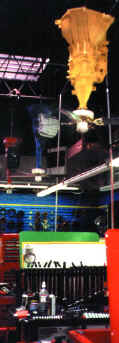 |
|
Case with fans on benches |
In 1975, he found the answer in what had once been the "Avery Egg Company"; a large, vacant building near a busy expressway. To obtain the building, Scottie needed a loan through the Small Business Administration (SBA). However, a significant obstacle stood in the way. To obtain the building, Scottie needed the loan to close in two weeks, and the SBA was then taking up to a year to process requests. He called the loan processor, and asked if they could somehow expedite his request. She told him it didn't look good É but to the surprise of both, it came through in record time.
The building was transformed from an egg processing center to a transmission shop, and Scottie's new business was off and running. The following several years brought continued success and growth, and by 1985, Scottie was employing 15 technicians. For Scottie, the growth also brought a down side. Maintaining a large work force meant, of course, that a significant volume of business had to come through the door. Everything had to be done on a broader scale. The process of wider and better advertising to expand the market; finding, hiring and continually training technicians that could effectively work on an expanding range of transmissions, and dealing with all the problems inherent in a bigger operation. Scottie decided it wasn't really what he wanted.
In 1990 he toned down the operation, and reduced his core of employees to a handful of the best he could find. He evaluated the type of work they were doing, and selected a relatively small number of the most common transmission types they typically worked on. By reducing the variety they would work on, they could get even better at those that they would accept, and the quality increased with fewer comebacks. The demand for constant training on units they may only rarely see was lessened, and that also helped reduce the strain.
To do this, of course, requires a fair-sized market area. Amarillo itself has a population of about 200,000, but serves as something of a commerce-hub for some 2.5 million people in a tri-state area. Scottie puts considerable effort into advertising; an aspect of his work that he admittedly may love more than transmission work itself. Ads for the shop appear regularly on local broadcast television and have been very effective in bringing in new customers. Scottie said the commercials are reasonable in price to produce and air, and have shown to be his most effective advertising medium. Other advertising includes quarter-page ads in the Yellow Pages of two phone books, and an occasional ad in the newspaper.
Customers that come into the shop are asked to complete a section of the work order that captures, in their own words, the symptoms of the problem their vehicle is experiencing. The vehicle is road-tested, and any required electronic diagnosis is completed. Once the technicians have a good idea of the problem, the customer is given a price within a given minimum and maximum range, and subject to change once the unit is opened and closer examination can take place.
Performing this work at Scottie's are service wrter Tray Zenor III, builder and R&R men John Abbott and Art Perez, and Abel Aleman, who is learning to rebuild transmissions while working on R&R. Scottie said he selected each of his employees for their personality and work ethic, not assumed technical ability. The men work well together as a team, and as Scottie put it, "could work as a NASCAR pit crew and be one of the best." Scottie still works building transmissions, and his wife of 41 years, Barbara, keeps her hand in as part-time bookkeeper.

Waiting Area
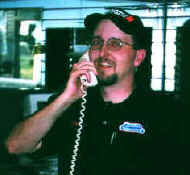
Trey Zenor |
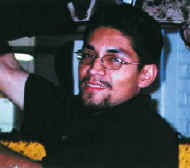
Abel Aleman |
Employees are well compensated through a combination of base pay and production incentives, and are given paid vacation and personal time off, depending on longevity. They also have a group medical insurance plan, paid three-day holiday weekends, and rotate through the half-day on Saturday in which the shop is open.
In addition, Scottie said he encourages his men to take the time to accompany their wives and children to medical appointments, and to spend lunchtime with them, when possible. What has evolved from this "employee-centered" emphasis is a team that is "as good as they come."
"We work as a team to do a good job," Scottie said. "If one of us has a problem, we all have a problem. We never blame or make anyone feel bad over a mistake. We all go to work to identify and fix the problem, and to prevent any future problems." To keep his people concerned about the quality of the product they produce, Scottie said he tells them to imagine that the vehicle they are working on would soon be occupied by their wife and children, embarked on a long trip. "That keeps us focused on all the little details," he said.
To keep his technicians sharp, Scottie said he first had to select those who showed a
"hunger" to learn. He feeds that hunger by supplying them with training videos, articles, seminars, and encouraging their pursuit of professional certifications.
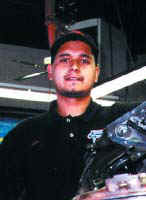
Arturo Perez |

John Abbott |
Those in the shop have a strong sense of community as well. Scottie's routinely donates transmission repairs to local non-profit organizations such as orphanages, the Boy's Ranch, Girl's Town, and others that provide community service--particularly those who work with children.
The shop itself has four side-by-side lifts, one 12,000 lb. drive-on lift, and a 25,000 lb. lift for motor homes and larger vehicles. Scottie said that 90% of the shop's work is rebuilding the original transmission for the vehicle owner, and almost all their work is retail. They keep no units in stock for exchanges. When I spoke of the limited scope of models on which they work, Scottie said his preference is for American-made vehicles, specifically GM, Ford, Chrysler, and recreation vehicles, in model years 1993 through 1999.
Scottie said he is also fairly selective on who he will take as a customer. He won't cobble together a short-term fix for a transmission that needs work, and he won't take shortcuts. For those who seek something less than his best effort at the commensurate price, he poses three questions: 1) When is cheap good? 2) When is good cheap? And, 3) When is good, good enough?
As Scottie said: "Quality is our first consideration. Quality is never an accident. It is always the result of high intentions, sincere effort, intelligent direction, and skilled execution. It represents the wisest choice of many alternatives."
We couldn't have said it better .
